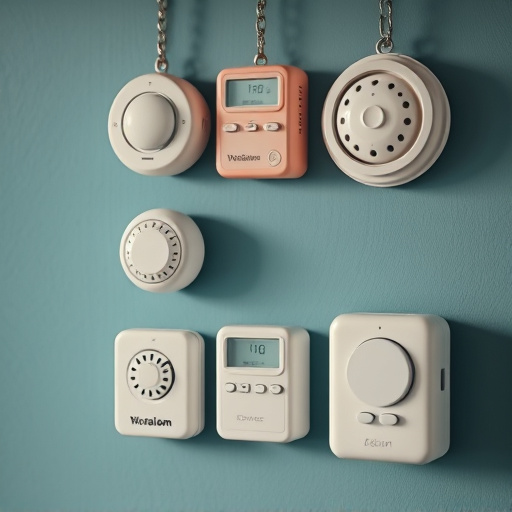Lone workers' safety relies on robust Personal Safety Sirens with long-lasting batteries to signal distress and attract help in emergencies. Modern technologies offer extended battery life, crucial for remote locations, ensuring reliability and peace of mind. Choosing the right siren with GPS tracking and durable design, along with regular maintenance, promotes proactive personal safety culture for lone workers.
In today’s world, ensuring the safety of lone workers is paramount. These individuals, often facing isolated risks, rely on effective alert systems. This article explores crucial aspects of personal safety, focusing on the role of a Personal Safety Siren as a game-changer in lone worker protection. We delve into understanding unique risks, the significance of battery life for continuous protection, and best practices to ensure these workers remain safe. By choosing the right system, we can revolutionize their safety measures.
- Understanding Lone Worker Risks and Needs
- The Role of Personal Safety Siren
- Battery Life: A Critical Component
- Choosing the Right Safety Alert System
- Best Practices for Ensuring Continuous Protection
Understanding Lone Worker Risks and Needs
Lone workers face unique challenges in ensuring their personal safety, as they are often isolated and without immediate backup. Understanding these risks is paramount when designing effective alert systems. These workers may encounter hazardous situations, such as injuries, illness, or unexpected emergencies, that require prompt attention. Therefore, a reliable safety alert system becomes an indispensable tool for their well-being.
One crucial aspect to consider is the reliability of the device’s power source, like a long-lasting battery life. Lone workers need assurance that their Personal Safety Siren will function when needed, without sudden outages or frequent replacements. Efficient battery management ensures they can rely on the system during critical moments, providing peace of mind and enhancing their overall safety.
The Role of Personal Safety Siren
One crucial component of safety alert systems for lone workers is the personal safety siren. This handheld device serves as a powerful tool to ensure immediate assistance in case of emergencies. When activated, the siren emits a loud and distinct sound, signaling distress and attracting attention from nearby individuals or emergency services.
The personal safety siren’s effectiveness relies heavily on its battery life. Long-lasting batteries are essential to provide peace of mind and ensure workers can rely on the device when needed. Modern sirens offer advanced battery technologies, such as rechargeable options, that significantly enhance operational duration. This feature is vital for lone workers who may be in remote or challenging environments where quick access to a power source is limited.
Battery Life: A Critical Component
The longevity of a personal safety siren’s battery life is a critical component in ensuring the effectiveness of the device, especially for lone workers who may be in remote or inaccessible locations. In the event of an emergency, a reliable and long-lasting power source can mean the difference between life and death. Workers relying on these devices need to be confident that their safety siren will operate when needed, without unexpected outages due to battery drain.
Choosing a personal safety siren with an extended battery life is essential. Modern technologies have enabled the development of advanced batteries that offer prolonged runtime, ensuring lone workers can maintain continuous protection for extended periods. This reliability instills peace of mind, allowing individuals to focus on their tasks without constantly worrying about battery levels, thereby enhancing overall safety and efficiency in demanding work environments.
Choosing the Right Safety Alert System
When selecting a safety alert system for lone workers, it’s crucial to consider factors like personal safety, ease of use, and reliability. One key component to look at is the personal safety siren—it should be loud enough to attract attention in an emergency. The battery life of the device is equally important; it needs to be long-lasting, especially if the worker is in remote areas with limited access to power sources.
Additionally, modern safety alert systems often come with GPS tracking features, which can help locate workers quickly during emergencies. Ensure the system is durable and water-resistant, as lone workers may encounter various weather conditions. User-friendly interfaces and straightforward activation mechanisms are also essential, as they allow workers to respond promptly in critical situations.
Best Practices for Ensuring Continuous Protection
To ensure continuous protection for lone workers, several best practices should be implemented regarding safety alert systems. Firstly, choose a device with a robust and reliable Personal Safety Siren that can emit loud, attention-grabbing sounds to signal distress. Secondly, focus on products with extended Battery Life to guarantee the system remains operational throughout shifts without frequent recharging or replacement. Regular maintenance checks are crucial; inspect batteries, ensure proper charging, and test sirens periodically to confirm they’re functional. Additionally, provide workers with clear instructions on activating the alerts and familiarize them with local response protocols, fostering a culture of proactive personal safety.
Lone workers face unique challenges, making it crucial to invest in reliable safety alert systems. By understanding their risks and implementing best practices, such as choosing the right equipment like a personal safety siren with robust battery life, we can ensure these individuals remain protected while working independently. Regular maintenance and continuous protection strategies are key to preventing accidents and promoting safe work environments for lone workers.
